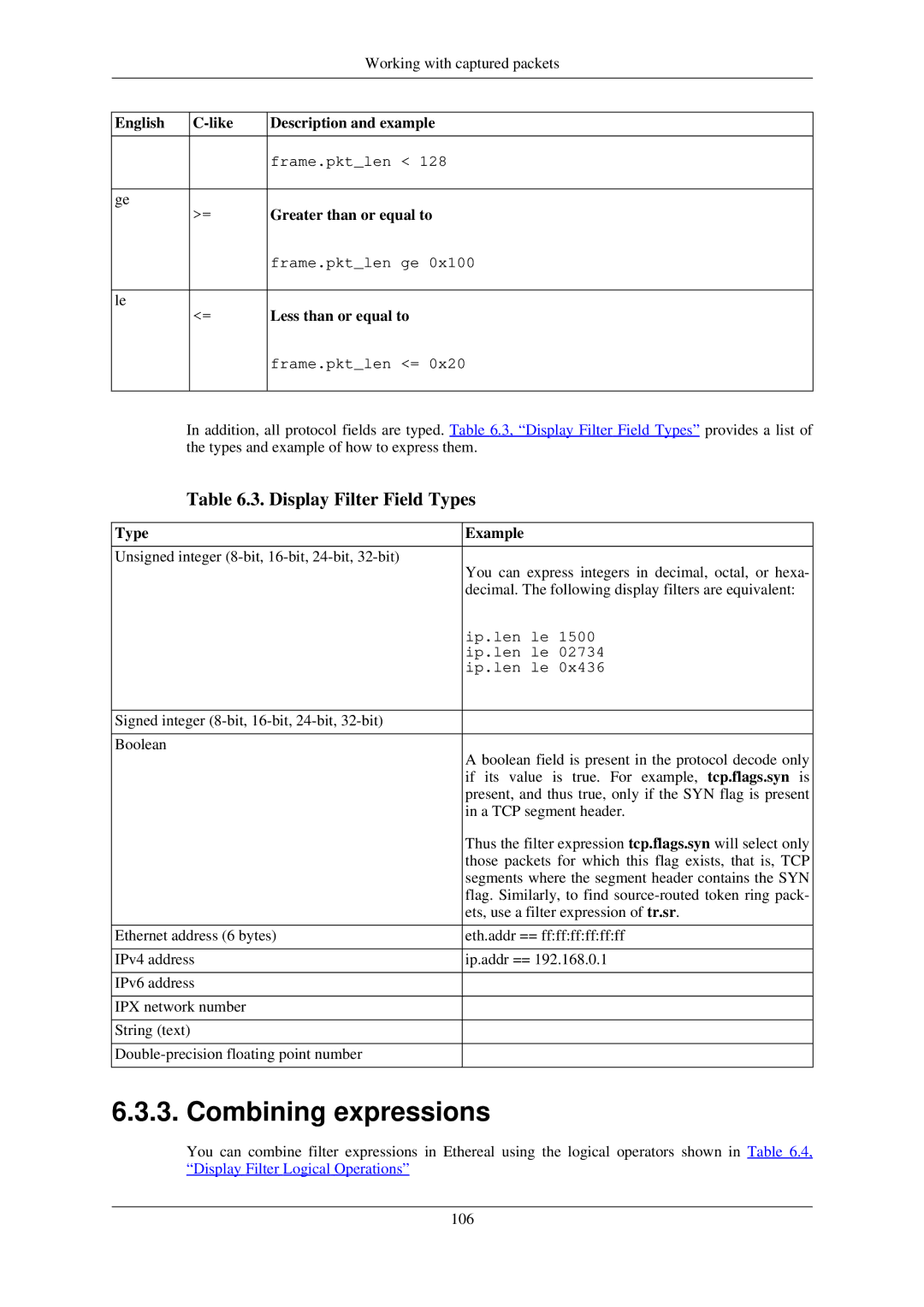|
| Working with captured packets |
|
|
|
|
|
|
English | Description and example | |
|
|
|
|
| frame.pkt_len < 128 |
|
|
|
ge | >= | Greater than or equal to |
| ||
|
| frame.pkt_len ge 0x100 |
|
|
|
le | <= | Less than or equal to |
| ||
|
| frame.pkt_len <= 0x20 |
|
|
|
In addition, all protocol fields are typed. Table 6.3, “Display Filter Field Types” provides a list of the types and example of how to express them.
Table 6.3. Display Filter Field Types | |
|
|
Type | Example |
|
|
Unsigned integer | You can express integers in decimal, octal, or hexa- |
| |
| decimal. The following display filters are equivalent: |
| ip.len le 1500 |
| ip.len le 02734 |
| ip.len le 0x436 |
|
|
Signed integer |
|
|
|
Boolean | A boolean field is present in the protocol decode only |
| |
| if its value is true. For example, tcp.flags.syn is |
| present, and thus true, only if the SYN flag is present |
| in a TCP segment header. |
| Thus the filter expression tcp.flags.syn will select only |
| those packets for which this flag exists, that is, TCP |
| segments where the segment header contains the SYN |
| flag. Similarly, to find |
| ets, use a filter expression of tr.sr. |
|
|
Ethernet address (6 bytes) | eth.addr == ff:ff:ff:ff:ff:ff |
|
|
IPv4 address | ip.addr == 192.168.0.1 |
|
|
IPv6 address |
|
|
|
IPX network number |
|
|
|
String (text) |
|
|
|
| |
|
|
6.3.3. Combining expressions
You can combine filter expressions in Ethereal using the logical operators shown in Table 6.4, “Display Filter Logical Operations”
106
